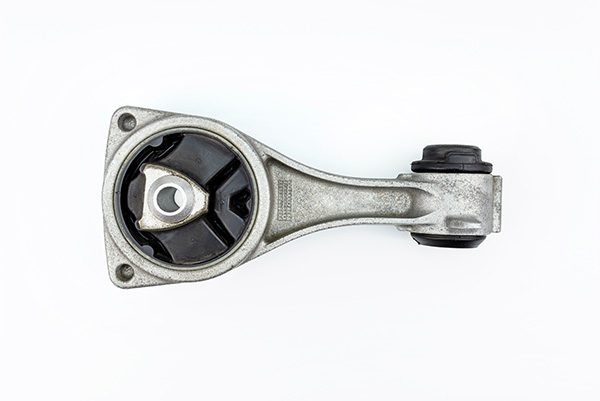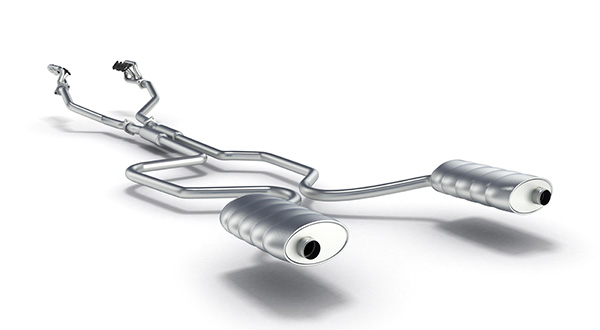Posted on 10/31/2024

When you hear the name Rolls-Royce, what comes to mind? Luxury, prestige, elegance—these are just a few words associated with this iconic car brand. But what exactly sets Rolls-Royce apart from other luxury vehicles? Rolls-Royce has been the gold standard for unparalleled craftsmanship, engineering excellence, and a driving experience that can only be described as extraordinary for over a century. So, what makes Rolls-Royce cars so unique? Every Car is a Masterpiece Rolls-Royce doesn’t mass-produce cars. Each vehicle is handcrafted by highly skilled crafters who pay attention to the smallest details, ensuring that every car is a one-of-a-kind masterpiece. From the moment a car begins its journey at the factory in Goodwood, England, experts carefully oversee every aspect of the process. The interiors, for instance, are crafted from only the finest materials—think hand-stitched leather, rare wood veneers, and custom trims. Each component, no matter h ... read more
Posted on 9/27/2024

McLaren—just the name evokes speed, precision, and a long-standing legacy of excellence. What began as a passion-driven project on the racetrack has transformed into a brand synonymous with cutting-edge supercars. From its beginnings in the world of Formula 1 to crafting some of the most desirable road cars on the planet, McLaren's journey is one of relentless innovation and pursuit of perfection. But how did this racing giant evolve into a supercar manufacturer that rivals the likes of Ferrari and Lamborghini? McLaren's Beginnings in the World of Racing To truly appreciate McLaren's place in the world of supercars, it’s important to understand its origins in racing. McLaren was founded in 1963 by Bruce McLaren, a New Zealand-born racing driver and engineer. From the outset, McLaren's focus was on building a racing team ... read more
Posted on 8/29/2024

When it comes to sports sedans, the Maserati Ghibli is a name that often sparks excitement among car enthusiasts. Known for its Italian craftsmanship, luxurious features, and powerful performance, the Ghibli stands out in a crowded field. But what exactly sets it apart from other sports sedans? Let's take a closer look at the unique aspects of the Maserati Ghibli that make it a true standout. Italian Craftsmanship and Design One of the first things that sets the Maserati Ghibli apart is its unmistakable Italian craftsmanship. Maserati, a brand synonymous with luxury and elegance, ensures that every Ghibli is a masterpiece of design. The exterior of the Ghibli is a blend of sleek lines, aggressive front grilles, and the iconic trident logo, making it instantly recognizable on the road. Step inside, and you are greeted by an interior that exudes opulence. The attention to detail is evident in every stitch of the premium leather upholstery, the handcrafted wood tri ... read more
Posted on 7/26/2024

Motor and transmission mounts might not be the first components that come to mind when thinking about car maintenance, but they are essential in your vehicle's overall performance. These mounts keep your engine and transmission securely in place, minimizing vibrations and ensuring a smooth ride. But how do you know when they're going bad? Recognizing the signs early can save you from bigger problems down the road. 1. Excessive Vibrations One of the most noticeable symptoms of bad motor and transmission mounts is excessive vibrations. When these mounts wear out or break, they can no longer effectively absorb the engine's vibrations. Why It Happens The rubber or polyurethane components in the mounts can degrade over time due to heat, oil leaks, and general wear and tear. What to Watch For If you feel more vibrat ... read more
Posted on 6/28/2024

Is your BMW's SRS light on? That little light can be quite unsettling, right? It's more than just an annoyance—it's a signal that something could be wrong with your car's safety system. But what exactly does it mean, and why is it on? Let's understand the reasons behind the SRS light illumination and what steps you should take to address it. The SRS Light The SRS (Supplemental Restraint System) light is an indicator linked to your vehicle's airbag system. When this light is illuminated, it suggests that there is an issue within the SRS system that needs immediate attention. The SRS system includes airbags, seatbelt pre-tensioners, and other related components designed to enhance the safety of the vehicle occupants during a collision. When you start your BMW, the SRS light should briefly illuminate and then turn off, indicating that the system ... read more
Posted on 5/28/2024

When it comes to optimizing your prized car's performance, overlooking the exhaust system's maintenance can be a costly mistake. From enhancing engine efficiency to maximizing horsepower and torque, a well-maintained exhaust system ensures peak performance on the road or track. In this article, we'll outline the significance of exhaust system maintenance for performance cars and explore why it's necessary for every discerning car enthusiast. Understanding the Role of the Exhaust System Beyond simply expelling exhaust gasses from the engine, the exhaust system contributes to engine performance by optimizing airflow, reducing backpressure, and enhancing engine efficiency. By effectively managing exhaust gasses, the exhaust system helps to maximize power output and fuel efficiency, ultimately enhancing the overall driving experience. Optimizing Engine Performance One of the primary reasons why exhaust system maintenance is essential fo ... read more
Posted on 4/26/2024

Owning a BMW is more than just driving a car – it's an experience. From performance to luxury, BMWs offer a unique blend of style and substance that sets them apart from other vehicles on the road. But beyond the surface, there are hidden gems of BMW ownership that add even more value to the ownership experience. The German Driving Machine BMW has built a reputation for its dedication to performance and the driving experience. Each BMW is engineered with precision and attention to detail, resulting in a second-to-none driving experience. From the engine's smooth power delivery to the responsive handling and precise steering, every aspect of a BMW is designed to deliver the ultimate driving experience. Whether you're navigating scenic mountain roads or cruising on the highway, you'll feel connected to the road like never before. Interior Comfort and Technology Step inside a BMW, and you'll immediately be greeted by a luxuri ... read more
Posted on 3/27/2024

Owning a Porsche is more than just driving a car – it's a lifestyle. Whether you're cruising down the highway or tackling the twists and turns of a mountain road, you expect nothing but the best from your Porsche. Proper maintenance is key to ensuring your Porsche delivers peak performance every time you hit the road. In this guide, we'll explore essential maintenance tips and best practices for keeping your Porsche running smoothly and performing at its best. Understanding Your Porsche Porsches are renowned for their precision engineering and unparalleled performance capabilities. From the iconic 911 to the versatile Cayenne, each Porsche model is a testament to decades of automotive innovation and craftsmanship. Understanding the intricacies of your Porsche's design and engineering can help you appreciate its capabilities and tailor your maintenance efforts to maximize performance and longevity. Routine Maintenance Re ... read more
Posted on 2/27/2024
.jpeg)
In the realm of automotive engineering, fuel injection systems play a pivotal role in the combustion process of internal combustion engines. While the concept may seem complex at first glance, understanding the purpose, types, and maintenance of fuel injection systems is essential for any vehicle owner or enthusiast. The Purpose of Fuel Injection Systems Fuel injection systems serves as the gateway for delivering precisely metered amounts of fuel into the combustion chambers of internal combustion engines. Unlike carburetors, which rely on the venturi effect to mix fuel with air, fuel injection systems atomize fuel more efficiently, resulting in better fuel economy, reduced emissions, and improved engine performance. Types of Fuel Injecti ... read more
Posted on 1/27/2024
.jpeg)
Your car's suspension system is like the backbone of your vehicle, designed to provide a smooth ride and maintain control and stability. This system includes a complex network of components such as springs, shock absorbers, struts, control arms, and sway bars. Let’s dive into the five common suspension problems and tips to prevent them, but first, a quick overview of the main types of suspension systems. Understanding Different Suspension System Types Before discussing common problems, let's explore the basic principles of different suspension system types: Leaf Spring Suspension: Predominantly used in heavy vehicles like trucks, this system uses a series of large steel springs (leaf springs) that flex to absorb motion. Coil Spring Suspension: The most common type in passenger cars, it uses coil springs to absorb the vehicle's motion, providing a comfortable ride. Torsion Bar Suspension: Utilizes a torsion bar that twists to provide suspension. C ... read more